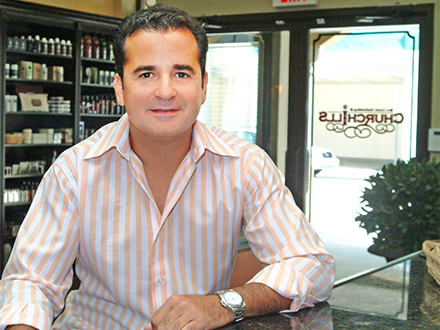Local artist Alex Yanes considers his ever-growing body of work to be his autobiography – a story largely influenced by the culture and colors of his hometown, Miami.
In tandem with his Cuban roots, Alex attributes his pop art style to his observations and experiences growing up in Miami’s street art community.
To learn more about what inspires this “Made in Miami’ artist, read on!
Tell us about your path to becoming an artist.
I draw a lot of my influence from my teenage years growing up in Kendall – skateboarding, listening to punk-rock and hip-hop, fascinated by tattoos and cartoons. I’ve always been creative. I remember winning my first art contest when I was 6 years old.
My dad and grandfather were big influences. My grandfather was a pilot in Cuba and my dad was a tool salesman – they both taught me how to build things by hand. I built my first treehouse when I was 10 years old and wood eventually became my medium of choice. From there I learned to paint.
Now I get to be a professional artist, which is like a dream. I’m so grateful that I get to create every day.
How has Miami’s arts scene evolved since you began your career in 2006?, and how does the City inspire your work?
Wynwood was nonexistent in 2006. Art Basel and the Arts District have given artists a platform to expose their work and our community has opened its eyes to the beauty and power of art. In many ways, art has brought even more color to an already vibrant city. My hometown provides great motivation and subject matter. From the pastel color palettes I use, to the recurring nautical themes and the tropical nature of my work, Miami is interwoven as part of who I am.
From Red Bull to Sony to Neiman Marcus, you’ve worked with some pretty big brands. What has been your favorite campaign?
I’d definitely say my campaign with Red Bull was the best project I’ve worked on because of the meaning behind the piece. I created a floating mural on an abandoned boat in order to bring awareness to the importance of preserving Biscayne Bay’s natural habitat. The project hit very close to home and is something I believe in deeply. It’s one of the main reasons I’m supporting Aabad and his team at the Rickenbacker Marina. They see themselves as protectors of the environment, and everyone in Miami has a responsibility to do the same.
Are there any places in Miami that you’d like to conquer for your next large-scale work?
I love exploring the intersection of everyday life in Miami and the water, so doing something at Marina PARC would be exciting. Marinas represent access to nature, and we need to do more as a city to bring our community closer to the water. Public art can be a part of that.
When you’re not working on your art how do you like to pass the time?
You’ll find me outside, probably somewhere on or near the water, with my wife and three little girls.

